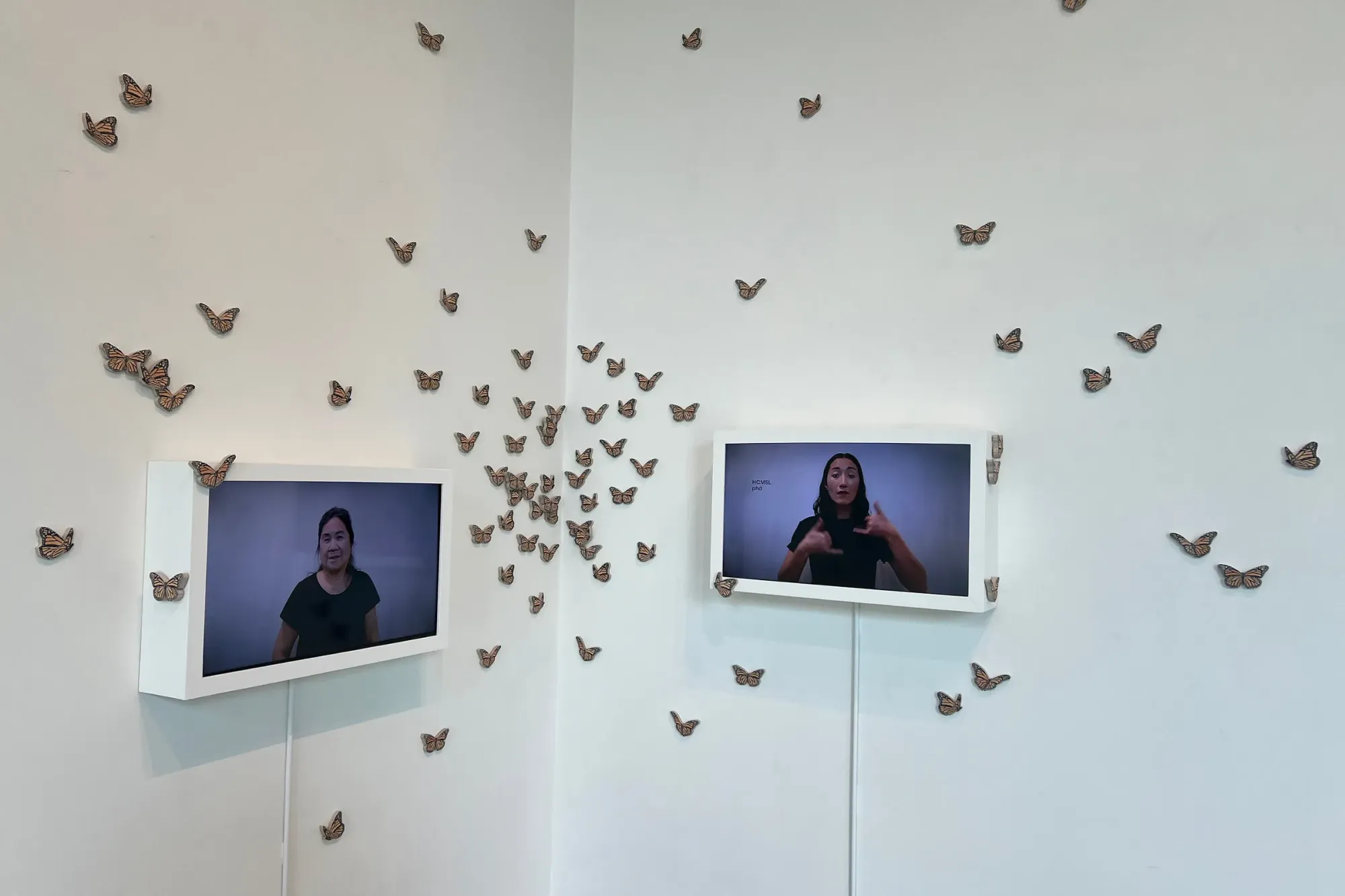Hayley Nichols and Nic Annette Miller: Natural Rhythms
108 Contemporary
Tulsa
Through Sept. 21
I was lucky enough to get out of Oklahoma’s sweltering heat recently, as my family and I spent our annual week at the Pecos River in Cowles, NM. It was the first year that we let our young boys fish. On our daily nature walk, we ventured down to the “big rock” where a little group of rainbow trout was visibly swimming below in a natural pool. Within minutes of casting the line, we hooked a fish — a beautiful six-inch rainbow. As it came hurtling out of the river, we were all screaming with excitement and delight, but the joy was quickly replaced with terror at watching my husband work to get the hook out of the fish’s mouth and back into the water. Immediately, one of our sons announced that he was done with fish and fishing, while the other was eager to get his line back in the water and catch dinner.
This experience jogged childhood memories of being in my father’s motorboat on the Long Island Sound, where we’d go for a long afternoon to fish, swim and find small sandbars. I liked the thrill of fishing, but I took my first ethical stance after watching a blue fish get thrust into a bucket on the deck of the boat, bleeding and bucking. It was not for me. I get why my son doesn’t want to eat fish anymore.
Within minutes of meeting Nic Annette Miller and Hayley Nichols at their two-person exhibition Natural Rhythms at 108 Contemporary, I was telling Nic about our fishing experience in New Mexico. This isn’t a new thing for her. Many people have shared fish memories, recipes and meditations at her Fishtallations (aka Fish Market Installations), which she has produced and performed for over ten years at farmer’s markets, craft fairs and festivals. I bet you have your own fish story. While Miller did not include a full Fish Market at 108, we did get a wall of crustaceans and fish. Sculptural serigraph prints of Spiny Lobster, Jumbo Shrimp, Cut Catfish and Sardines were all on view, along with a delicate basket of woodcut print paper sculptures of Dry Anchovies on dó paper, a handmade paper made from the inner bark of the dó tree and traditionally produced in many villages in Vietnam.
The Fishtallation sculptures were paired with Miller’s risograph pocket zines, titled Dishes with Fish Tales. Each zine shared a chapter from her collection of short stories based on meals remembered from her childhood. Her Spring Roll Buffet story ends with Miller stating, “Without the company, what ends up on my plate is no longer really feeding me; it’s unmemorable. I crave a deeper kind of nourishment.”
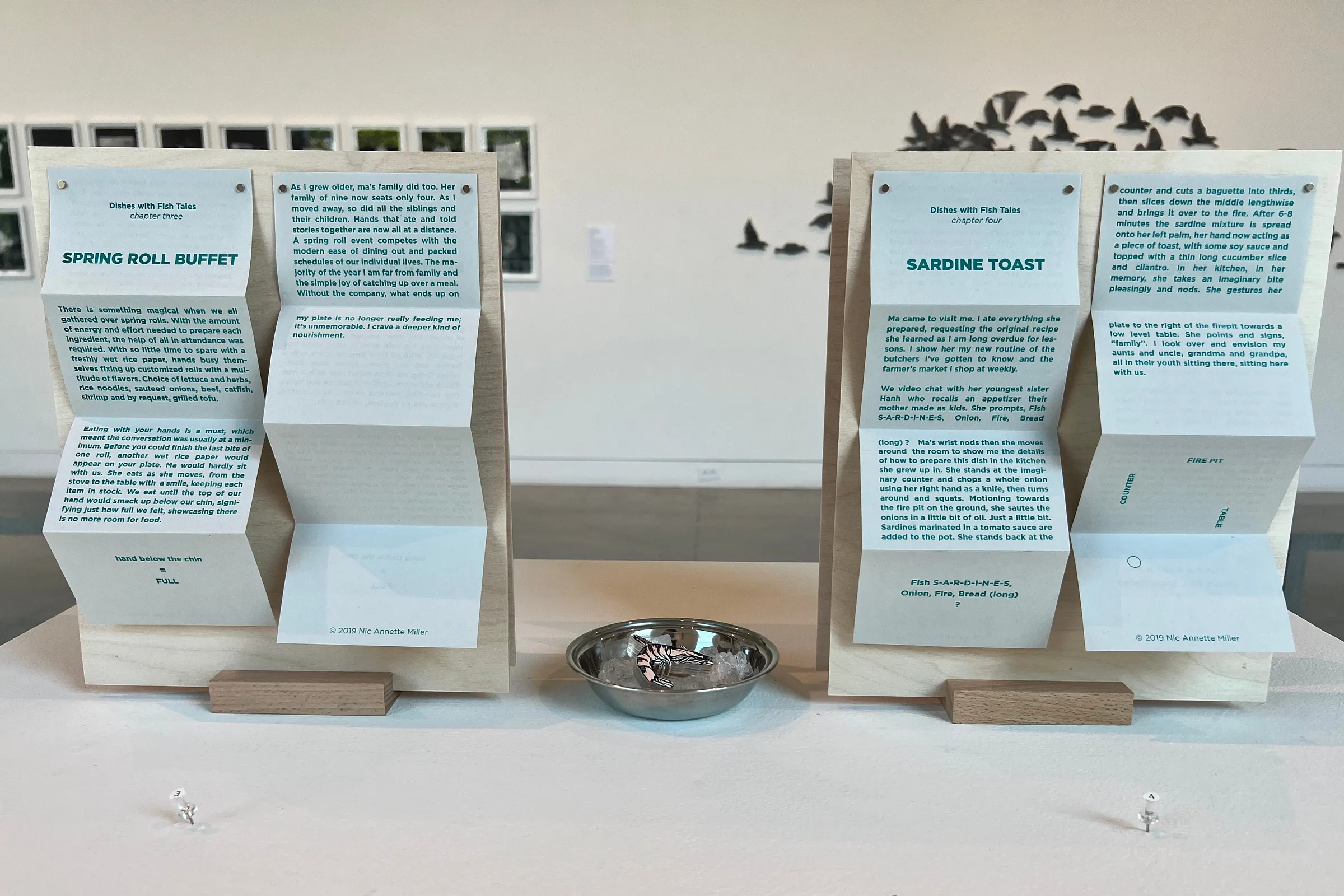
Directly across from Miller’s fish, The Napkin Project—a series of monotypes by Nichols — picks up this thread. This minimalist dinner party recalls the “snare-pictures” of Swiss artist Daniel Spoerri, who showed the remains of meals shared. Nichols’ monotypes pare this down further by showing only the napkin used by a friend during a meal. The prints capture time spent together, but also the unconscious movements and ephemeral scraps that are generated by human touch.
One of the first pieces one encounters in Natural Rhythms is a round table set with thirteen objects that show traces of human interaction and use. These works — like Marks of Sustenance (Medium), a ceramic bowl that shows the marks of spoons scraping the interior of the vessel, or The Last Paper Towel made of handmade paper with cotton and abaca, or Untitled (Studio Dogs), a collection of dog hair represented in a relief print — point to things left behind.
Earlier this spring Miller and Nichols independently presented projects that made their way into Natural Rhythms and serve as monumental keystones in the exhibition. Sonic Hum, a work supported by the Artists Creative Fund, was developed by Nichols at the “ROOMS” Annex as an interactive experience that invited participants to hum while their sound vibrations played through a speaker placed under a marbling bath. The sound vibrations animated the water and created marbled prints on fabric. Each person’s hum was then hung in the space in a real-time display of those who had visited and those who were still gathered. At 108, Nichols hangs the fabric prints from the ceiling in a cathedral-like display that takes up a full corner of the gallery. Each mark recalls the voices of individuals displayed in concert, creating a chorus of silent sound and felt presence.
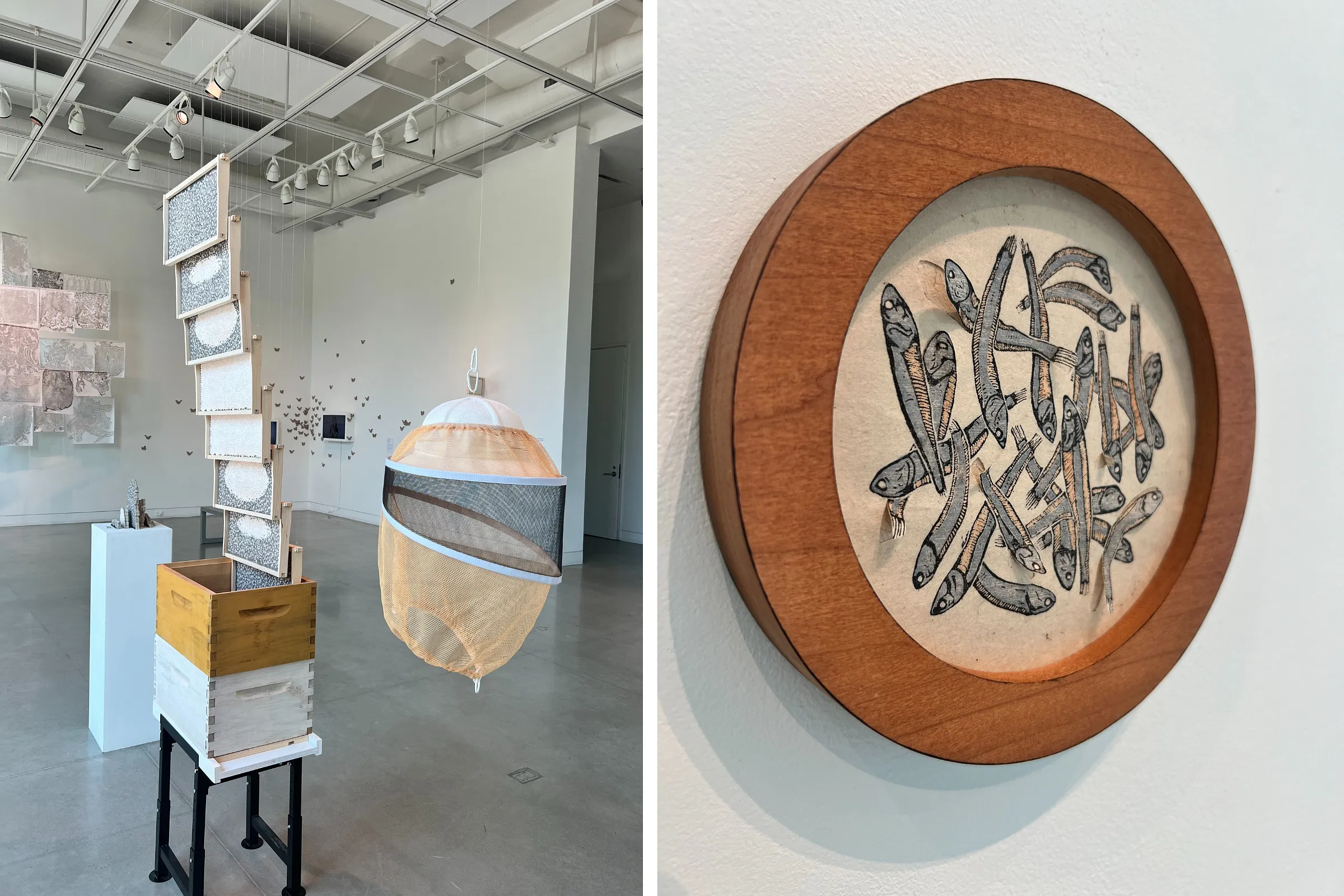
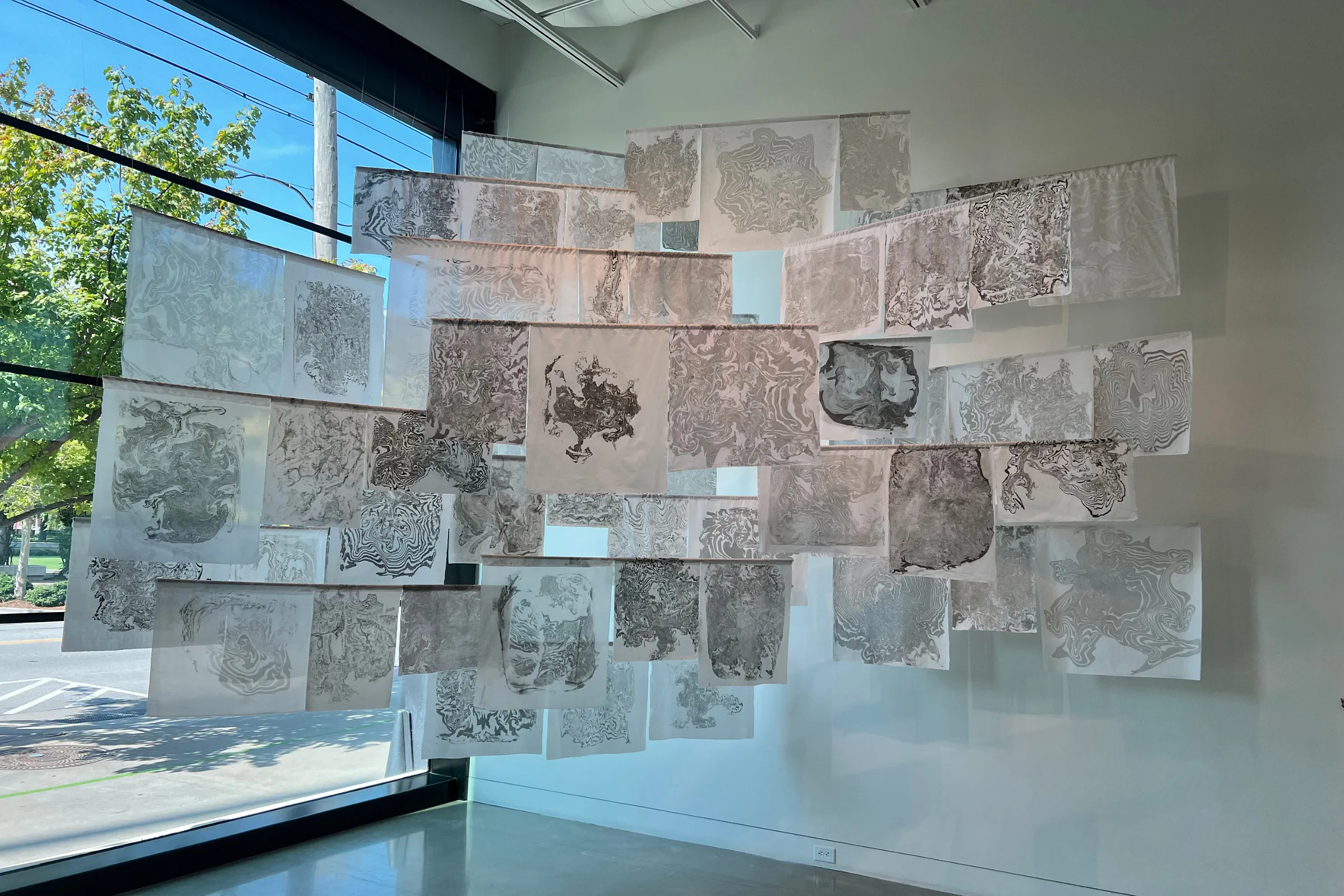
Beehive States by Miller is an auditory sculpture investigating the honeybee’s wingbeat. Hanging from the ceiling is a modified beekeeper’s helmet containing a speaker that plays the sound of thousands of bees buzzing. It’s the sound a beekeeper would hear tending to their hive; here, only the person wearing the helmet can hear and feel the vibrations of the bees beating their wings at 230 times per second. The helmet is accompanied by double-sided woodblock prints that show various states of the hive on eight different frames suspended at various heights above the hive. As stated in the description of the work, Miller points to those who might be fearful of the bees after hearing their wings, swatting the pollinator away, contrasted with those without hearing who, without fear or hesitation, ostensibly allow the bee to continue its flight undisturbed.
Miller’s longing for a deeper nourishment is something both artists capture in Natural Rhythms by showing us flight patterns and resting states of various pollinators who assist in the fertility and regeneration of the earth. Migrating Monarchs, a collection of sculptural woodcut prints, takes flight around Our Tones, Our Wrists, Our Home (Ngữ Điệu, Cổ Tay, Nhà), a poem-slash-video that shows the artist and her deaf mother signing the same words in various forms of sign language, including Ho Chi Minh Sign Language, American Sign Language, Signed Exact English, Ecuadorian Sign Language, and a home sign language dialect. It tells the story of migration through immigration and language and how people come together in all ways to be understood and heard.
Nichols’ One Year Apart, showing the wear of a “push” sign on a door, hangs on a gallery wall and also welcomes you into the space in the enlarged form of two sheets of vinyl covering 108 Contemporary’s door. The piece shows the inevitable marks made to everyday objects that reveal use, presence, and touch. Nichols is telling us to pay closer attention to scuff marks and imperfections, which often go unnoticed. It’s in those details that interaction, play, and humanity can be felt.
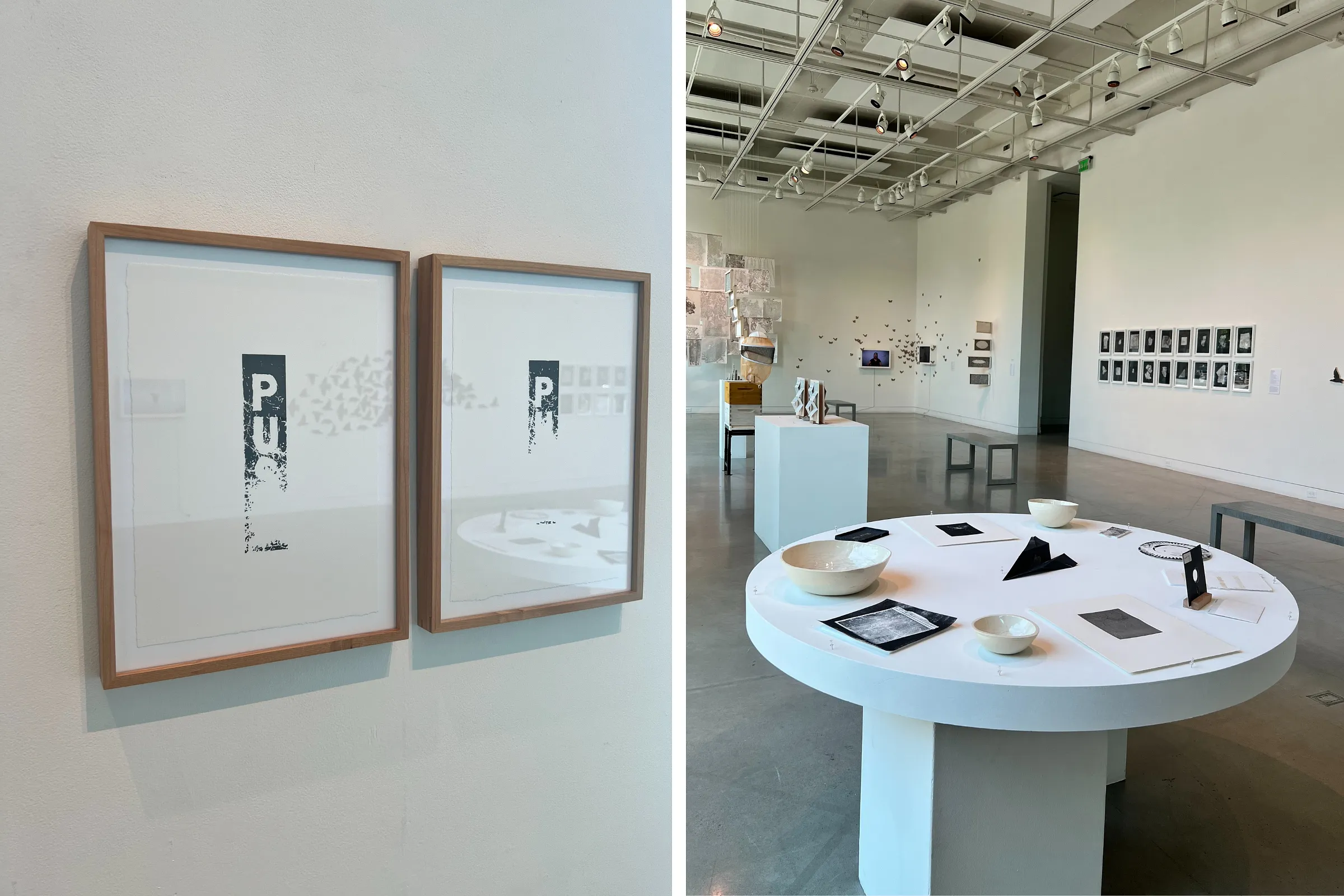
You know those friends you can pick up with right where you left off after having not been together for some time? Well, Nic Annette Miller and Hayley Nichols are those types of friends, but they’re lucky enough to live in the same city, Tulsa. You can sense their mutual love, respect, and curiosity the moment you walk into Natural Rhythms. Their exhibition is filled with tender, clever, and beautiful works that explore all of our senses and what remains after moments of togetherness.
Natural Rhythms: Hayley Nichols & Nic Annette Miller is on view at 108 Contemporary now through September 21, 2024.
